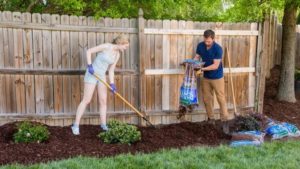 The buying and selling of homes are the largest financial transactions you may make, and as with most financial transactions, there’s a tax angle. If you know what your tax implications are as you go into the deal, you’re better able to plan and avoid unpleasant surprises.
The buying and selling of homes are the largest financial transactions you may make, and as with most financial transactions, there’s a tax angle. If you know what your tax implications are as you go into the deal, you’re better able to plan and avoid unpleasant surprises.
Unlike with most other capital gains, the government gives you a big break when selling your principal home for a profit. You can exclude up to $250,000 ($500,000 if married filing jointly) of the profit from the sale. This exclusion is available for an unlimited number of times. And it applies to houses, apartments, condominiums, stock cooperatives, and mobile homes fixed to land.
However, there are other rules and limitations. To take advantage of the exclusion, you must own and occupy the home as your principal residence for at least two years before you sell it. Owning it and occupying it are two different things, however, and although you have to meet both tests, you don’t have to do this simultaneously. As legal site Nolo explains, “As long as you have at least two years of ownership and two years of use during the five years before you sell the home, the ownership and use can occur at different times.” This is an eligibility break for renters-turned-buyers, who can count rental time before the purchase as part of the “occupy” time.
Also note the word “principal.” This is your main home, where you spend most of your time. You can only have one principal residence at a time. If you have a townhouse in the city where you work but spend August in your country home, your townhouse is still your principal residence.
The IRS also imposes conditions to be eligible for the larger $500,000 married exclusion. You must meet all the conditions below:
- You are married and file a joint return for the year.
- Either spouse meets the ownership test.
- Both spouses meet the use test.
- During the two-year period ending on the date of the sale, neither spouse excluded gain from the sale of another home.
If a spouse is deceased, under what conditions can the surviving spouse use the $500,000 exclusion? You have to meet all of the following conditions:
- You sell your home within two years of the death of your spouse.
- You haven’t remarried at the time of the sale.
- Neither you nor your late spouse took the exclusion on another home sold less than two years before the date of the current home sale.
- You meet the two-year ownership and residence requirements (including your late spouse’s times of ownership and residence if need be).
Getting a Break on Improvements
If you’re single and buy a house for $300,000, you’re limited to a sale later of $550,000 before you start having to pay taxes. However, any improvements you made will increase that $300,000 basis, and the IRS is generous in what it considers an improvement. You can add a new room, landscaping, a heating system, new siding — even a satellite dish. General repairs, like fixing a broken windowpane, do not add to the basis. But fixing the windows as part of a larger renovation project will count.
The bottom line? When selling a home, work with professionals to make sure your plans are aligned with tax rules.
Contact our office to speak with one of our knowledgeable agents.





